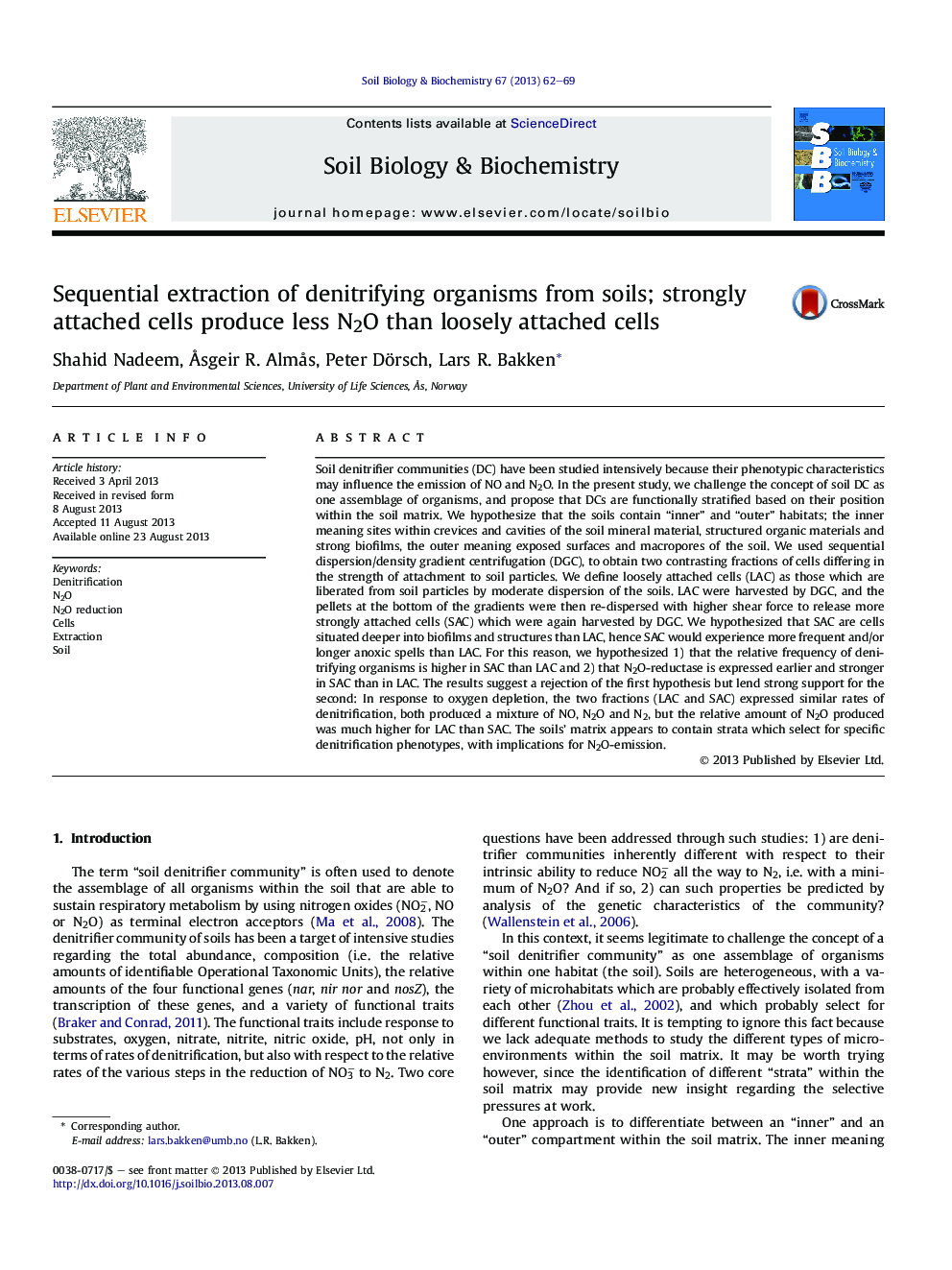| Article ID | Journal | Published Year | Pages | File Type |
|---|---|---|---|---|
| 8365025 | Soil Biology and Biochemistry | 2013 | 8 Pages |
Abstract
Soil denitrifier communities (DC) have been studied intensively because their phenotypic characteristics may influence the emission of NO and N2O. In the present study, we challenge the concept of soil DC as one assemblage of organisms, and propose that DCs are functionally stratified based on their position within the soil matrix. We hypothesize that the soils contain “inner” and “outer” habitats; the inner meaning sites within crevices and cavities of the soil mineral material, structured organic materials and strong biofilms, the outer meaning exposed surfaces and macropores of the soil. We used sequential dispersion/density gradient centrifugation (DGC), to obtain two contrasting fractions of cells differing in the strength of attachment to soil particles. We define loosely attached cells (LAC) as those which are liberated from soil particles by moderate dispersion of the soils. LAC were harvested by DGC, and the pellets at the bottom of the gradients were then re-dispersed with higher shear force to release more strongly attached cells (SAC) which were again harvested by DGC. We hypothesized that SAC are cells situated deeper into biofilms and structures than LAC, hence SAC would experience more frequent and/or longer anoxic spells than LAC. For this reason, we hypothesized 1) that the relative frequency of denitrifying organisms is higher in SAC than LAC and 2) that N2O-reductase is expressed earlier and stronger in SAC than in LAC. The results suggest a rejection of the first hypothesis but lend strong support for the second: In response to oxygen depletion, the two fractions (LAC and SAC) expressed similar rates of denitrification, both produced a mixture of NO, N2O and N2, but the relative amount of N2O produced was much higher for LAC than SAC. The soils' matrix appears to contain strata which select for specific denitrification phenotypes, with implications for N2O-emission.
Related Topics
Life Sciences
Agricultural and Biological Sciences
Soil Science
Authors
Shahid Nadeem, Ã
sgeir R. AlmÃ¥s, Peter Dörsch, Lars R. Bakken,
